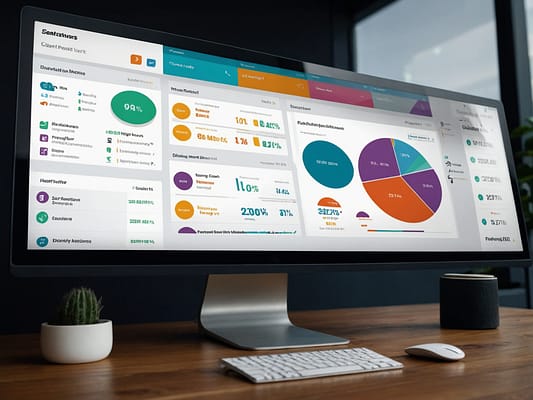Tips for Improving Customer Experience: Practical Advice for Building Stronger Relationships with Clients
Customer experience (CX) has become a critical differentiator in today’s competitive market. Businesses that prioritize CX are better positioned to retain customers, foster loyalty, and drive long-term success. This detailed guide will explore actionable strategies to enhance your customer experience, with real-world examples, practical tools, and insights to help you build stronger relationships with your clients.
1. Understand Your Customers’ Needs
Understanding your customers is the foundation of exceptional CX. Without knowing their expectations, pain points, and preferences, you’ll struggle to deliver the experiences they want.
Practical Steps:
Conduct regular customer surveys and feedback forms. Use platforms like SurveyMonkey or Google Forms for convenience.
Host focus groups to dive deeper into customer perspectives.
Analyze data from CRM systems to identify patterns and behaviors.
Example: A clothing retailer noticed many customers abandoned their carts during checkout. By analyzing feedback, they discovered the issue was high shipping costs. Addressing this with free shipping promotions boosted sales by 15%.
Pro Tip: Create detailed customer personas that represent various segments of your audience. For example, a “budget-conscious buyer” or a “tech-savvy enthusiast” persona can help tailor your approach.
2. Streamline Communication
Clear and efficient communication is critical for a positive customer experience. Customers want to feel heard and have their issues resolved quickly.
Practical Steps:
Offer multiple channels for communication, including email, live chat, phone, and social media.
Train your team to handle inquiries with professionalism and empathy.
Implement chatbots for basic inquiries while keeping human support for complex issues.
Example: A tech company implemented live chat on its website, reducing response times from 24 hours to just 5 minutes. This change led to a 30% increase in customer satisfaction scores.
Tool Highlight: Use tools like Zendesk or Intercom to manage multi-channel communication effectively.
3. Personalize Interactions
Customers expect businesses to treat them as individuals, not just another number. Personalization can significantly enhance their experience.
Practical Steps:
Use customer data to send personalized recommendations and offers.
Address customers by name in communications and reference past interactions.
Celebrate customer milestones, like birthdays or anniversaries, with tailored messages or discounts.
Example: An online bookstore used purchase history to recommend books tailored to individual tastes. This strategy increased repeat purchases by 40%.
Pro Tip: Personalization isn’t limited to digital interactions. Train in-store staff to remember frequent customers and their preferences.
4. Empower Your Team
Your employees are the face of your business and play a pivotal role in delivering exceptional customer experiences. Empower them to succeed.
Practical Steps:
Provide ongoing training on customer service skills, product knowledge, and emotional intelligence.
Create a culture of accountability and encourage employees to take initiative in solving problems.
Recognize and reward team members who go above and beyond for customers.
Example: A hotel chain trained its staff to handle special customer requests autonomously, such as arranging surprise birthday setups. This initiative led to an increase in five-star reviews.
5. Leverage Technology
Technology can simplify processes and make customer interactions seamless.
Practical Steps:
Use CRM systems like Salesforce or HubSpot to track interactions and preferences.
Implement AI-driven chatbots to handle basic customer queries instantly.
Adopt self-service portals that let customers access information or resolve issues on their own.
Example: An airline introduced a mobile app for customers to check in, select seats, and receive flight updates. This reduced check-in queues and improved overall satisfaction.
6. Act on Feedback
Customer feedback is a goldmine of information that can drive improvement. Acting on feedback demonstrates that you value your customers’ opinions.
Practical Steps:
Regularly collect feedback through surveys, online reviews, and focus groups.
Address negative feedback promptly and transparently.
Close the loop by informing customers about changes you made based on their input.
Example: A restaurant chain used customer feedback to revamp its menu, introducing healthier options. This attracted a broader customer base and increased revenue by 20%.
7. Deliver Consistent Experiences
Consistency across all touchpoints builds trust and reinforces your brand’s reliability.
Practical Steps:
Standardize service protocols to ensure uniform experiences.
Regularly audit customer journeys to identify inconsistencies.
Train your team to deliver consistent service, whether in-person, online, or over the phone.
Example: A coffee shop chain ensured every location followed the same customer service guidelines, leading to a recognizable and trusted experience worldwide.
8. Exceed Expectations
Surprising your customers with thoughtful gestures can create lasting impressions and turn them into loyal advocates.
Practical Steps:
Send personalized thank-you notes after purchases.
Offer unexpected upgrades or freebies.
Proactively address potential issues before they escalate.
Example: An e-commerce site sent hand-written thank-you notes with orders, delighting customers and boosting social media mentions by 50%.












9. Monitor and Measure Success
Measuring your CX efforts ensures you’re on the right track and highlights areas for improvement.
Practical Steps:
Use metrics like Net Promoter Score (NPS), Customer Satisfaction Score (CSAT), and Customer Effort Score (CES).
Regularly analyze data and adjust strategies as needed.
Benchmark your performance against competitors to identify opportunities.
Example: A software company tracked its NPS quarterly and identified declining satisfaction in its onboarding process. Addressing the issue improved scores by 25%.
10. Showcase Financial Impact
Strong CX doesn’t just lead to happy customers—it drives measurable business outcomes.
Key Insights:
Companies prioritizing CX achieve revenue growth 4-8% higher than the market average (Bain & Company).
Loyal customers are five times more likely to repurchase and four times more likely to refer new customers (Forrester).
Final Thoughts
Improving customer experience is a journey, not a destination. By understanding your customers, empowering your team, and leveraging technology, you can create memorable experiences that foster loyalty and drive business growth. Start implementing these tips today and watch your customer relationships flourish!



